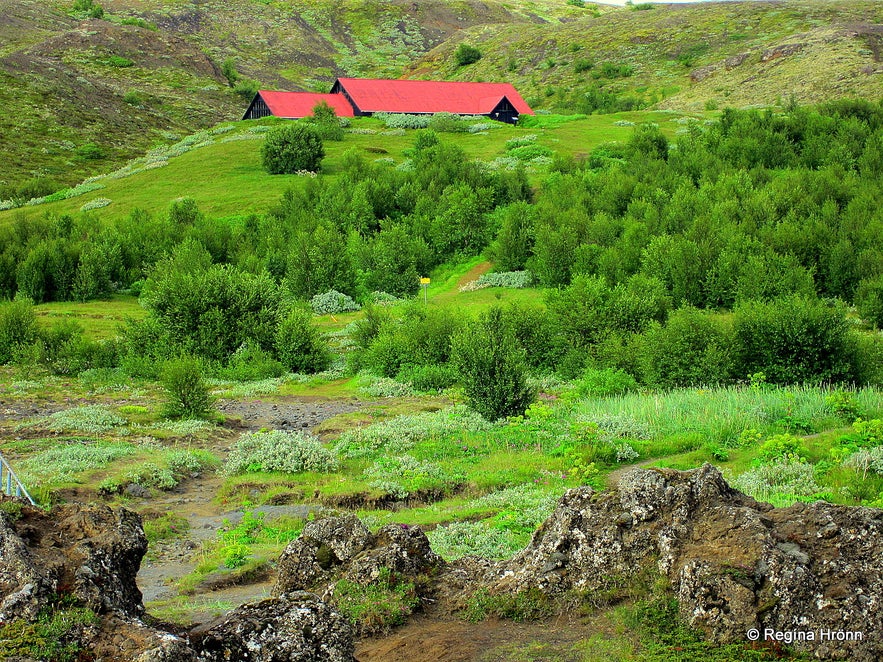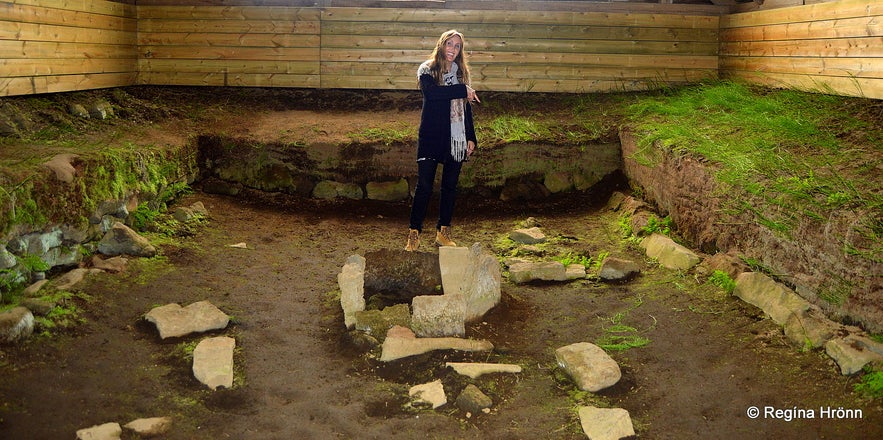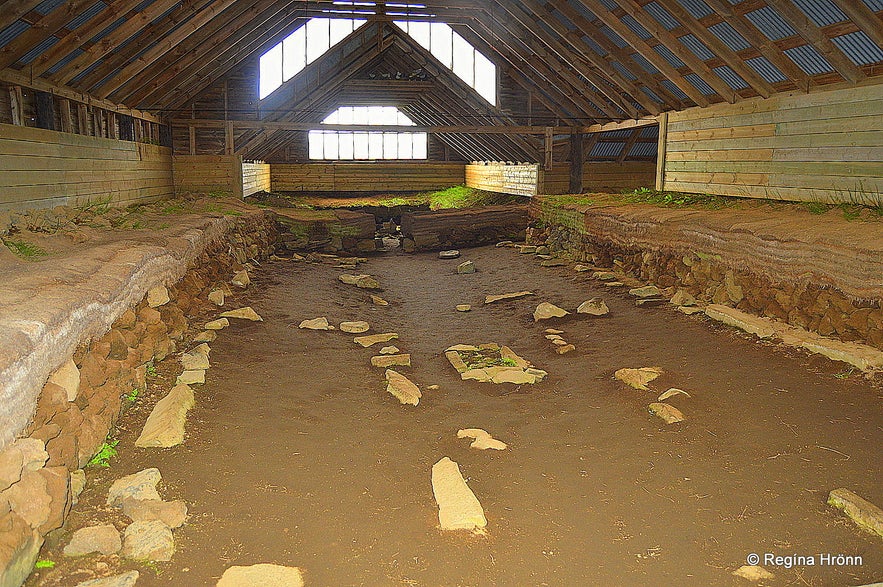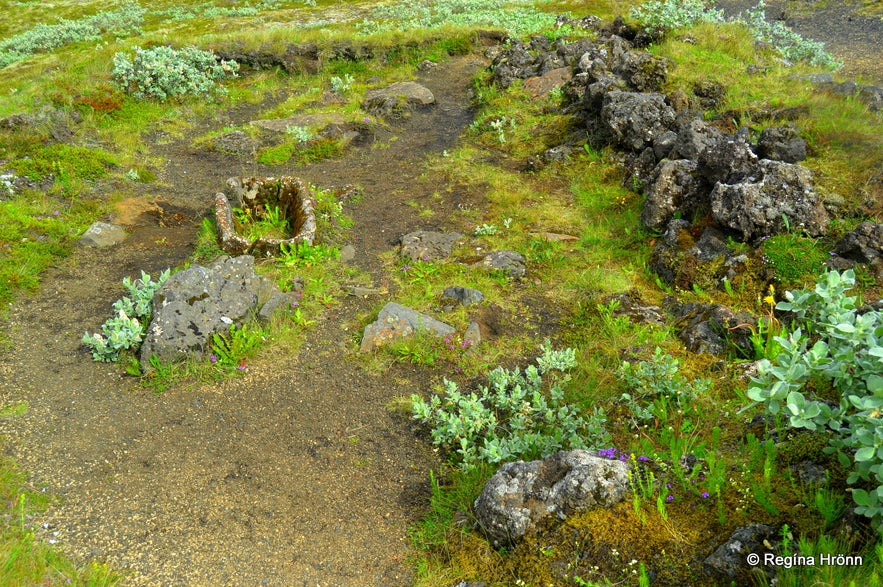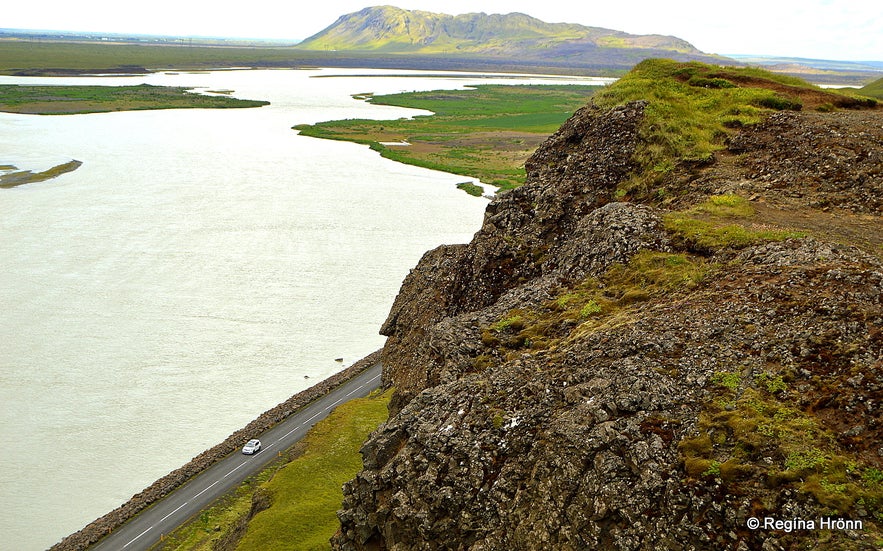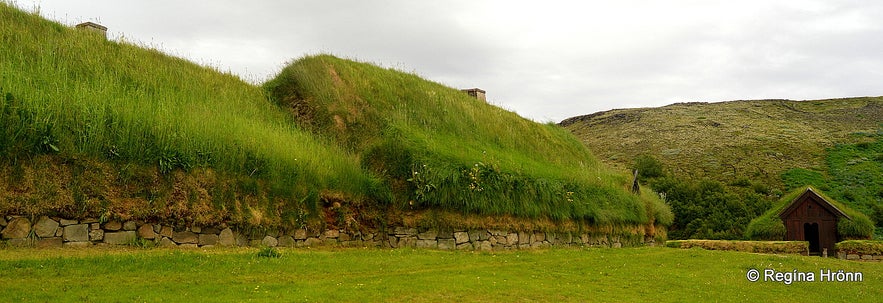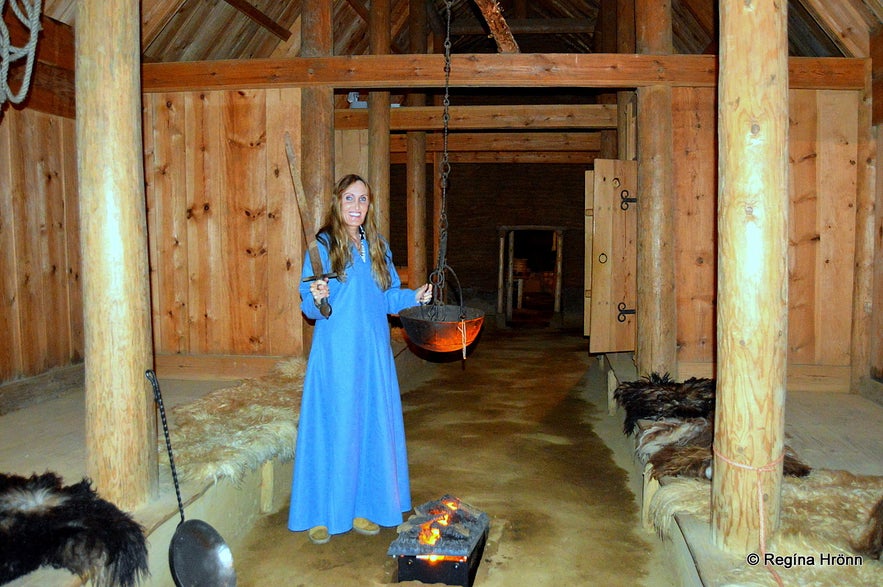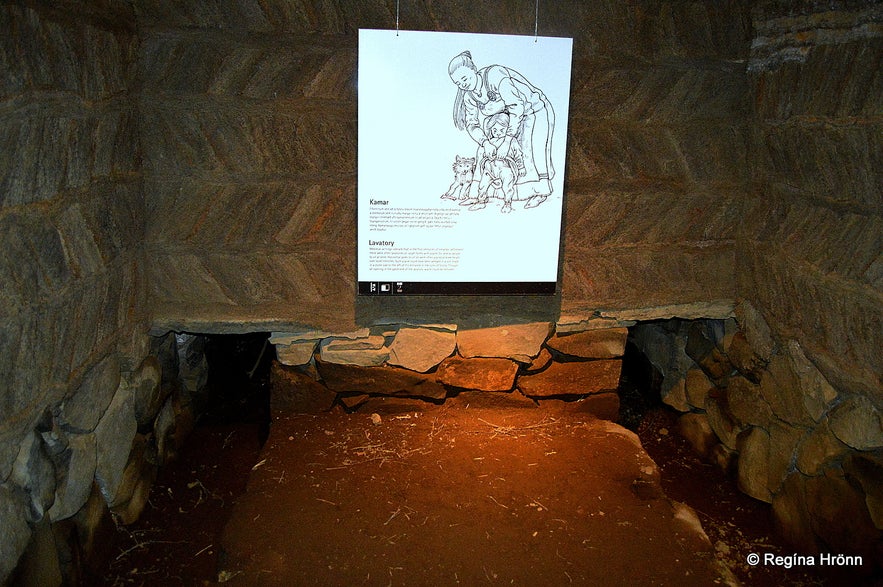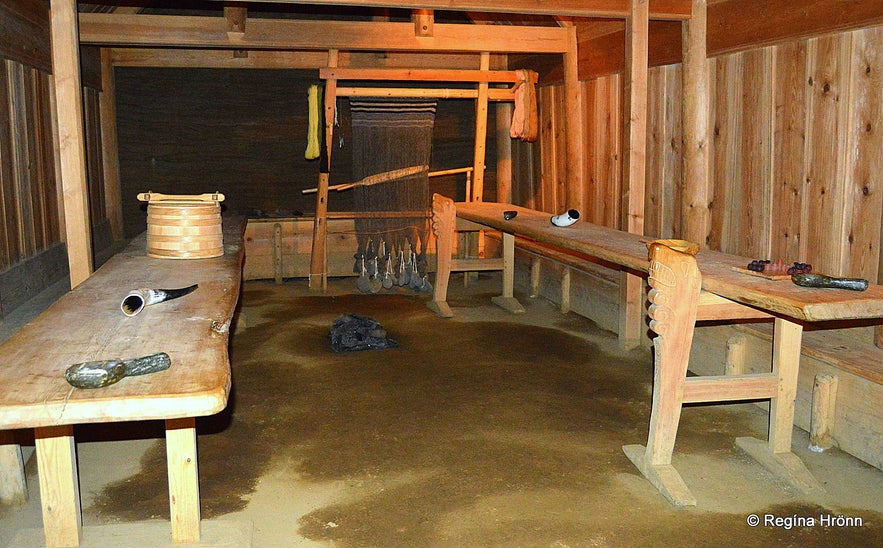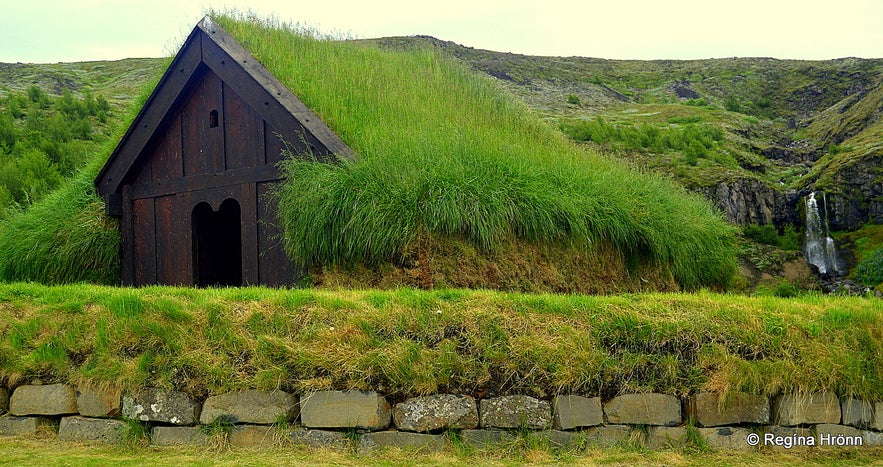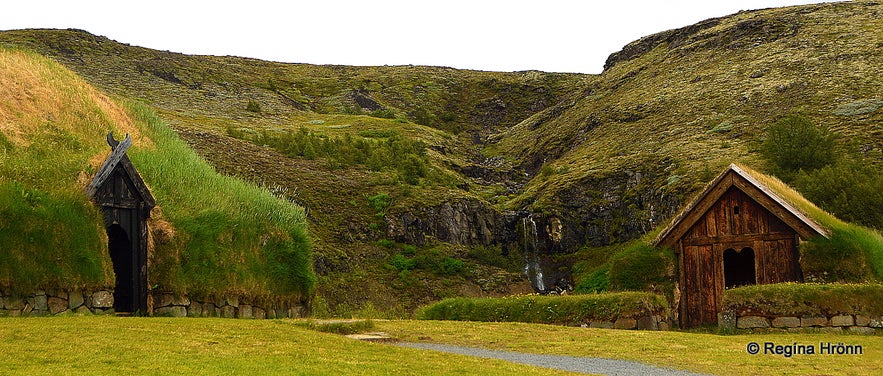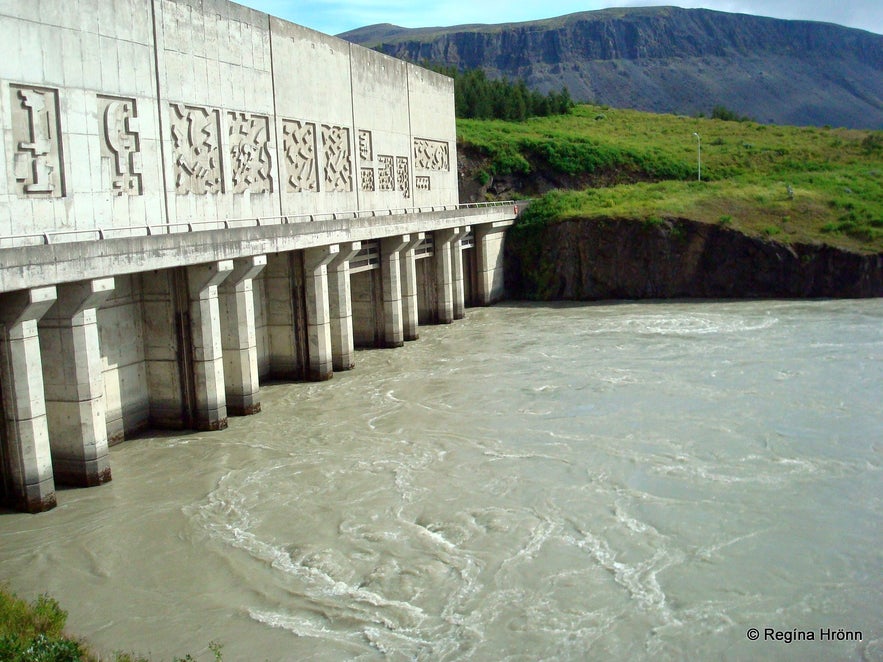
Stöng - Ruins of a Real Viking Settlement Manor and the Reconstructed Saga-Age Farm in Iceland
In this travel blog I am going to show you the ruins of a real Viking Age farm, Stöng, which can be found in Þjórsárdalur valley upcountry in South Iceland.
Some of the Vikings settled in the valley, unaware that they were in the proximity of the notorious volcano Hekla - the Queen of Icelandic volcanoes.
Mt. Hekla erupted for the first time after the Settlement of Iceland in 1104 causing the devastation of some 22 settlement farms in the Þjórsárdalur valley.
Top photo: Stöng with a red protective roof
Inside Stöng Viking longhouse
In 1939 a Nordic team of archaeologists excavated the exceptionally well-preserved ruins of Stöng, which had been hidden away for 835 years under massive layers of pumice.
This was the first time a group of trained archaeologists researched Icelandic ruins.
Several of the farms were excavated and examined, but only one remains above ground, Stöng, the others were covered over again.
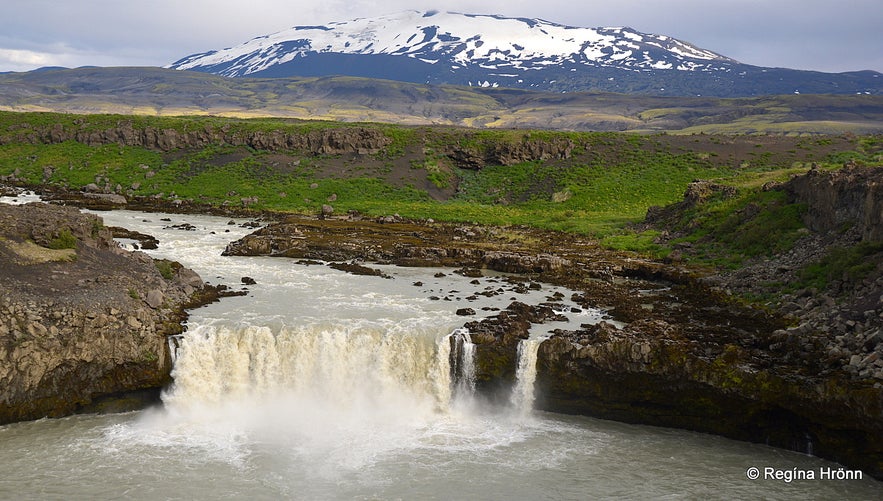
Mt. Hekla in the background of Þjófafoss waterfall
It is believed that people lived at Stöng almost continuously until around 1300 though when Mt. Hekla erupted again.
Other factors are also believed to have contributed to this place becoming desolate, other than the tephra covering the land, f.ex. cold weather.
Since the eruption in Mt Hekla in 1104, the volcano has erupted in 1158, 1206, 1222, 1300, 1341, 1389, 1510, 1597, 1636, 1693, 1766, 1845, 1947, 1970, 1980, 1981, 1991, and 2000, so one can see that it is very active and "due" to erupt again.
The latest eruption in Iceland though is in Geldingadalir valley on the Reykjanesskagi peninsula in SW Iceland.
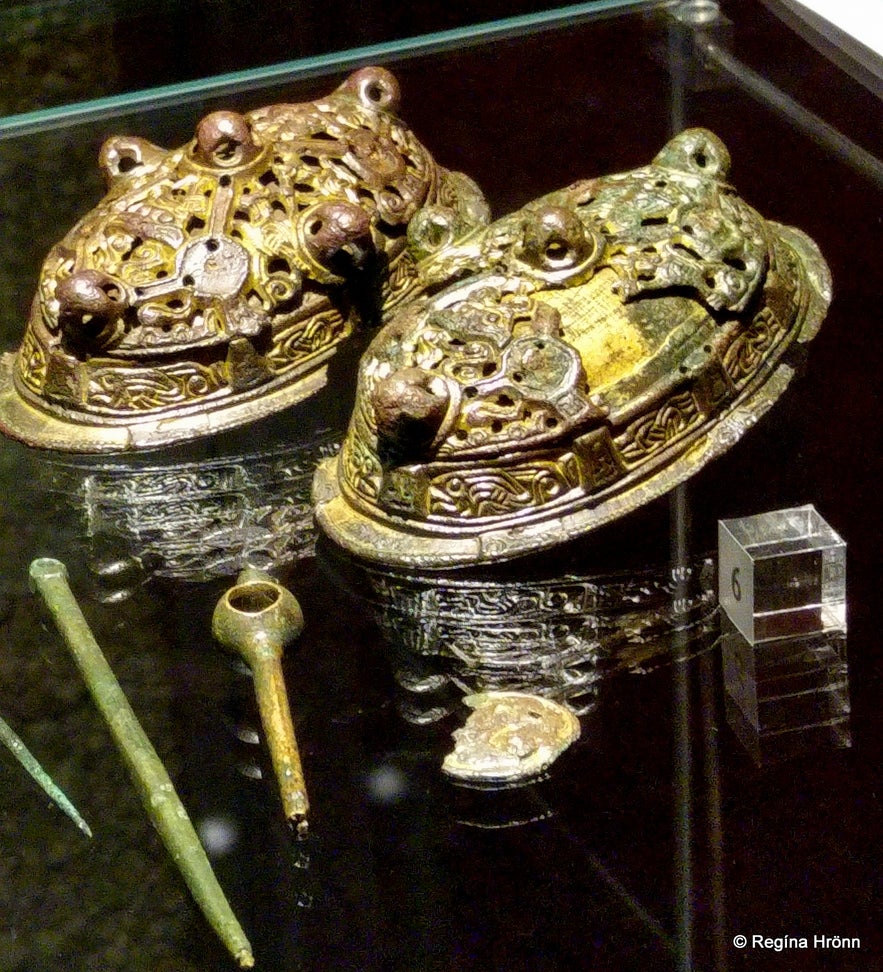
Viking stuff at the Þjórsárdalur section at the National Museum of Iceland
Many Viking things were discovered and there is a small section dedicated to Þjórsárdalur valley and the Viking stuff at the National Museum of Iceland.
The Viking stuff in my photo above is a small part of the things discovered. I have not been able to find out though where these broaches were found.
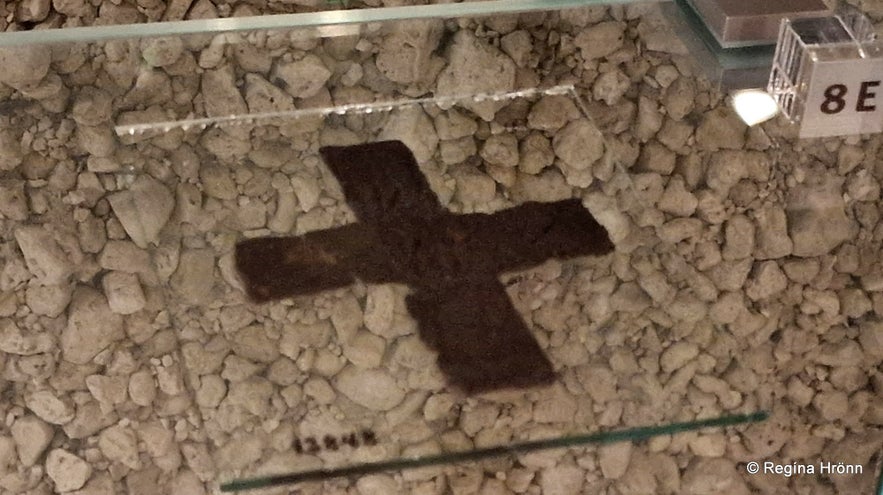 A cross found at Stöng in Þjórsárdalur valley
A cross found at Stöng in Þjórsárdalur valley
I love the ornamental Viking brooches and own a replica of them, but such brooches have been found in several places in Iceland.
The cross in my photo above was unearthed at Stöng though and it dates back to around the 11th century (Sarpur - kross). The cross is made of bone, 6.3 x 5.7 cm.
Inside Stöng Viking longhouse
What you can see here at Stöng are stone foundations of a Saga-age farm, covered by a protective wooden shelter with a red roof, which was added in 1957. There are now plans of adding a new roof.
Inside you will find the entrance, the hall (skáli) with a longfire, a pantry, a living room, and a big toilet room. People worked and ate in the skáli by the longfire, and slept in the hall, their beds were on each side of the hall. In the smaller room, furthest away in my photo above, was a loom.
The room to the right is thought to be the pantry with dug-down containers for dairy products (soured meat).
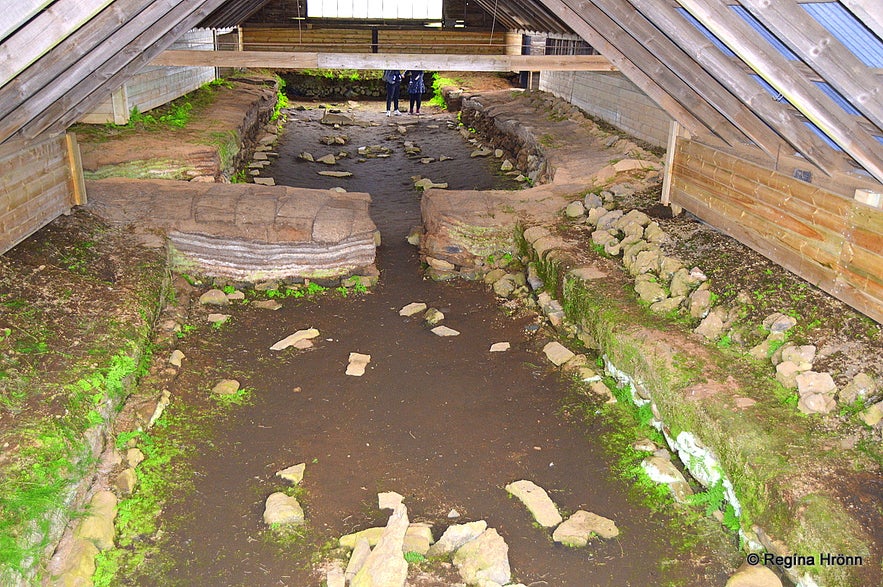
Inside Stöng
I took the photo above from the window outside. It shows the archaeological ruins of Stöng from the opposite side, looking into the living room, where the loom was, but approximately 20 loom weights were discovered here.
The turf is not original. I have seen people running and stamping on the turf, but let's show utter respect here inside this old Viking longhouse. Stöng is amongst Iceland's best-known archaeological sites.
And in this valley, the second generations of the settlers lived.
The ruins of a smithy at Stöng - here bog-iron production most likely took place
Ruins of a stall, a barn, and a smithy were also found during the excavations back in 1939. These ruins are uncovered.
Church ruins and a churchyard were revealed much later on. And ruins of an even older farm beneath Stöng farm.
If you don't fancy driving to Stöng yourself, then a visit to Stöng is included in The Hidden Circle of Iceland - the Golden Circle with a very pleasant Twist.
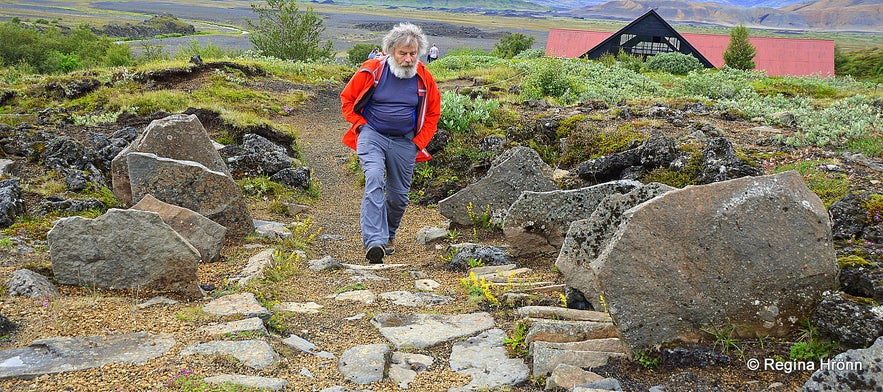
My husband's uncle and I visited the ruins of the church
I have written another travel-blog about Viking Ruins and Burial Mounds I have visited on my Travels in Iceland - which is a list of all the archaeological sites and burial mounds, I have visited in Iceland.
I am just a layman travelling in my country though, so better talk to an archaeologist or a scholar if you need detailed information.
Gaukur á Stöng - Gaukur at Stöng farm and Gaukshöfði cape
Gaukshöfði cape
The Viking Gaukur Trandilsson lived at Stöng. He was the son of Þorkell trandill Þorbjarnarson, who was the son of Þorbjörn laxakarl and Una Steinólfsdóttir, who are mentioned in Landnáma - the Book of Settlement.
Gaukur Trandilsson (Þorkelsson) is mentioned briefly in 2 chapters of the Saga of Njáll, but his Saga which might have been called Þjórsdælasaga or Gauks saga Trandilssonar is unfortunately lost. I have read all the Sagas and feel a great loss over the Sagas which were lost.
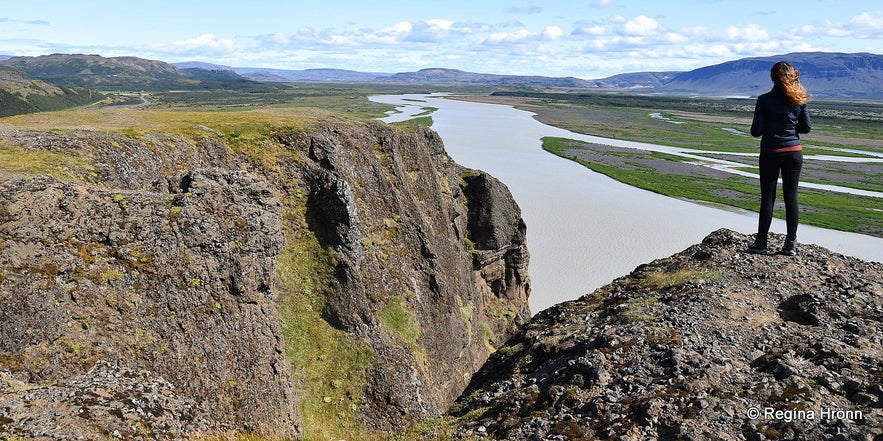 On top of Gaukshöfði cape
On top of Gaukshöfði cape
The paragraph in the 26th chapter of the Saga of Njáll, where Gaukur is mentioned goes like this:
"Gaukur Trandilsson var fóstbróðir Ásgríms er fræknastur maður hefir verið og best að sér ger. Þar varð illa með þeim Ásgrími því að Ásgrímur varð banamaður Gauks".
 Gaukur lived here at Stöng in Þjórsárdalur valley
Gaukur lived here at Stöng in Þjórsárdalur valley
And the paragraphs from chapter 138 in the Saga of Njáll:
"Skafti mælti: "Vér erum óskaplíkir. Þið þykist hafa staðið í stórræðum. Þú Gissur hvíti, þá er þú sóttir Gunnar að Hlíðarenda en Ásgrímur af því er hann drap Gauk fóstbróður sinn."
Ásgrímur svarar: "Fár bregður hinu betra ef hann veit hið verra. En það munu margir mæla að eigi dræpi eg Gauk fyrr en mér væri nauður á".
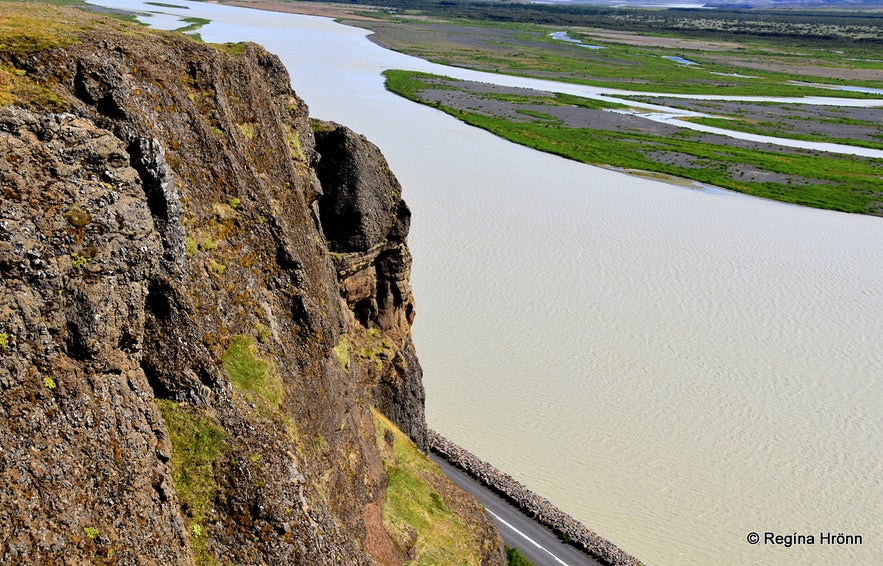 Gaukshöfði cape and Þjórsá glacial river, Iceland's longest river
Gaukshöfði cape and Þjórsá glacial river, Iceland's longest river
Gaukur was killed by his own foster brother, Ásgrímur Elliða-Grímsson.
They apparently waged a duel of honour over Gaukur's affair with Ásgrímur's kinswoman, the married Þuríður Arngeirsdóttir at Steinastaðir farm. Her husband was Steinólfur Ölvisson.
There is an old poem, which vaguely tells us about the alleged affair between Gaukur and Þuríður:
"Önnur var þá öldin,
þegar Gaukur bjó á Stöng.
Þá var ei til Steinastaða
leiðin löng"
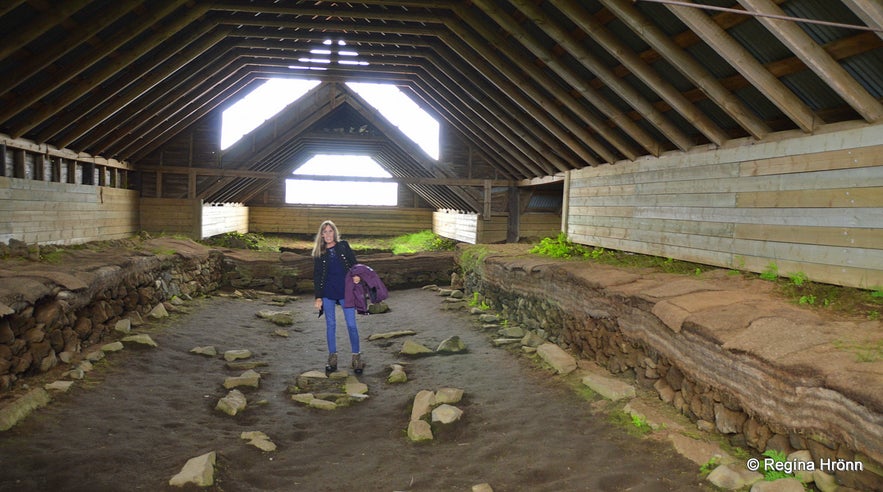 Inside Stöng archaeological ruins where Gaukur lived
Inside Stöng archaeological ruins where Gaukur lived
Þuríður was from northeast Iceland, from the farm Hraunhöfn on Melrakkaslétta. In another travel-blog I have told you about Hraunhafnartangi and Þorgeirsdys - one of the Northernmost Spots on the Mainland of Iceland.
In Þjóðsögur Jóns Árnasonar - the Collection of Folklore by Jón Árnason we read about Þuríður's father and brothers - Oddur kolbítur Arngeirsson. Her father and brother were killed by a polar bear and Oddur her brother killed the polar bear and ate it as revenge for killing his loved ones.
He walked from Melrakkaslétta to Þjórsárdalur valley when his sister Þuríður was to be stoned for alleged sorcery.
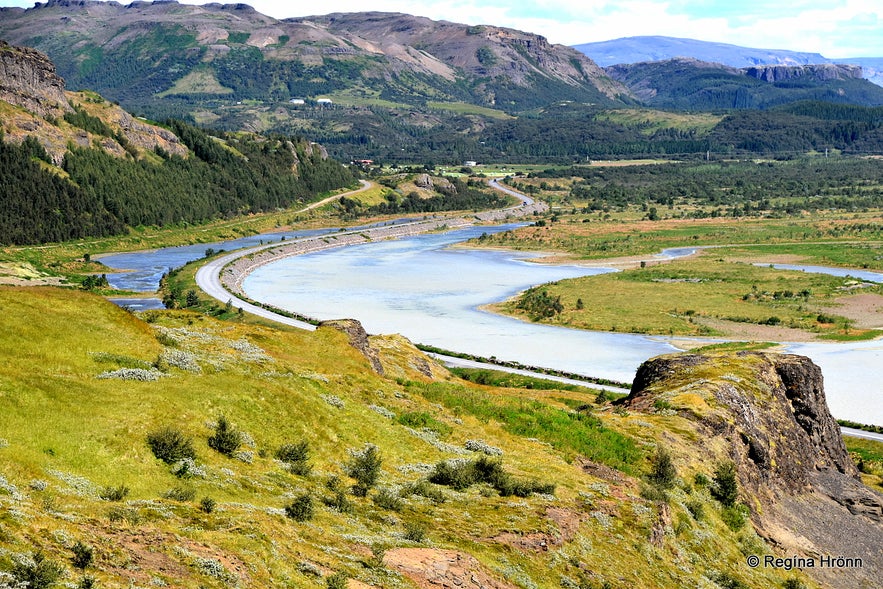 The view of Þjórsárdalur valley and Þjórsá river from Gaukshöfði cape
The view of Þjórsárdalur valley and Þjórsá river from Gaukshöfði cape
Runes were found back in 1861 on Hrossey Island on the Orkney archipelago in a large burial mound. The runes are believed to date back to the 12th century and this is what the runic inscription seems to say (ref. Árnastofnun):
"Þessar rúnir
reist sá maður,
er rýnstur er
fyrir vestan haf,
með þeirri öxi
er átti Gaukur
Trandils sonur
fyrir sunnan land"
In English:
"These runes were carved by the man who was the most knowledgeable of runes in the west of the sea, using the axe that belonged to Gaukur Trandilsson in the south of the land" (ref.: Gauks saga Trandilssonar).
The view from Gaukshöfði cape
In Þjórsárdalur on a protruding cape called Gaukshöfði ancient bones were found in the 19th century, which might as well be the bones of Gaukur, might not.
The cape is right by the road so it is easily accessible.
It is possible to walk up to the top of the cape, where there is a fantastic view of Þjórsá glacial river, Iceland's longest river, and of the surrounding area.
Þjóðveldisbærinn Saga-age farm
Þjóðveldisbærinn
Þjóðveldisbærinn (Commonwealth Farm) Saga-age farm is a reconstructed medieval farmhouse, a full-scale replica of the excavated ruins of the real Viking settler's farmhouse at Stöng in Þjórsárdalur valley.
In 1974-1977, on the 1100th anniversary of the Icelandic settlement, Þjóðveldisbærinn was erected close to where the Stöng farmhouse was excavated. But much more easily accessible.
You can dress up like a Viking at Þjóðveldisbærinn
This farm is a "must-see" when visiting this area, there is something so magical about this place like you have just popped in for a visit to a Viking chieftain.
Inside the farm in the middle of the main hall, you will find a longfire. By it, the inhabitants worked, rested, ate, and told stories.
The toilet area and a drawing of a woman helping her child
Here one can see how the second generation of the Vikings lived. You will find an entrance, a dining area, a sleeping area, a working area, a toilet room, and a pantry - an exact replica of the Stöng archaeological site.
There is no guidance inside Þjóðveldisbærinn, but you can dress up in Viking clothes and hold swords and knives which is a great photo opportunity.
Walking between some of the rooms of Þjóðveldisbærinn is strange as the ceiling in the corridors is really, really low.

Inside Þjóðveldisbærinn
I tend to bump my head a lot when walking inside turf houses. People were considerably smaller in the olden days as times were harder.
I have written a long list of the turf houses I have visited in Iceland, so you can see how many times I have bumped my head during my travels in Iceland ;)
A List of the beautiful Icelandic Turf Houses, which I have visited on my Travels in Iceland
Inside Þjóðveldisbærinn
A church was erected by Þjóðveldisbærinn Saga-age farm and consecrated in the year 2000 to celebrate the 1000-year anniversary of Christianity in Iceland.
It is a small turf church, built to the liking of the church excavated by the farm at Stöng - or what we think it might have looked like. Not everybody agrees on this.
A small, serene waterfall can be seen next to the Saga-age farm. It is such a beautiful setting! And the distinctive Hjálparfoss waterfall is only a stone-throw away.
The turf church by Þjóðveldisbærinn
The church is open and it is really small, showing that the Vikings were smaller than people today. Watch your head!
The church belongs to the congregation of Stóra-Núpsprestakall benefice and the Icelandic state owns both the Saga-age farm and the church.
Þjóðveldisbærinn - a replica of a Saga-age farm
A scene from the TV series Game of Thrones was shot at this location. A very violent scene, where all the inhabitants of the farm were killed by the Wildlings, apart from a small boy.
I have written a special travel-blog about the Game of Thrones locations I have visited in Iceland, where you can watch the scene shot at Þjóðveldisbærinn:
The Extraordinary Game of Thrones Locations I have visited on my Travels in Iceland
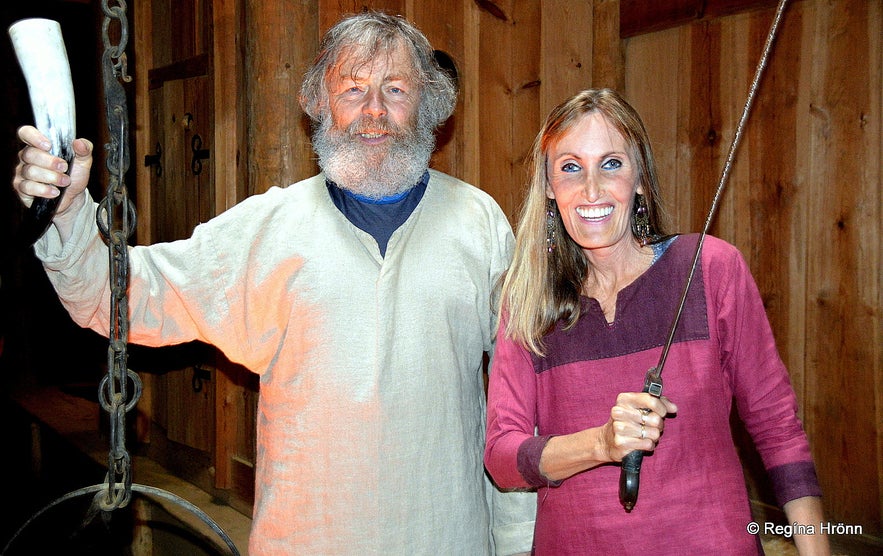
Dressing up with my husband's uncle, Jón, at Þjóðveldisbærinn
A visit to Þjóðveldisbærinn is included in The Vikings & The Sagas | A Tour Through History, a wonderful guided Viking and Saga tour which I have joined and written another travel-blog about:
The Vikings and the Sagas – a fun and educational tour of South-Iceland.
This tour will take you to Hjálparfoss waterfall, Þjóðveldisbærinn, and to the most important locations of Njálssaga - the Saga of Njáll - Hlíðarendi and Bergþórshvoll where Gunnar and Njáll from the Saga of Njáll lived. And end with a dinner at the Viking Village.
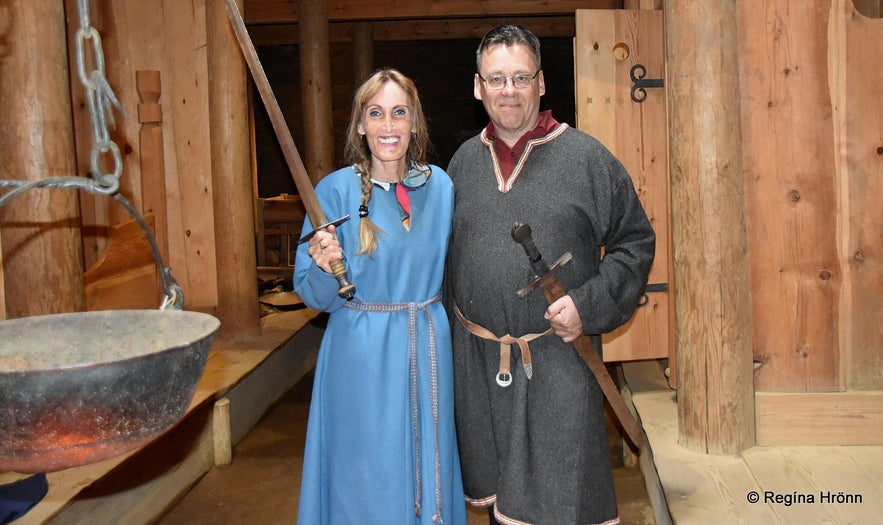
With the guide Kjartan who took me on the Vikings & the Sagas tour. Kjartan and I found out on the tour that we are 3rd cousins
Kjartan loves the Sagas as much as I do, so it was a delight being guided around the Saga locations by a fellow Saga enthusiast :)
Another tour is called the Hidden Circle and will f.ex. take you to Hjálparfoss waterfall and Stöng and also to the 3rd highest waterfall in Iceland, the magnificent Háafoss waterfall. I have also joined this tour and can recommend it.
Notice how Þjóðveldisbærinn blends perfectly in with nature
The Saga-age farm is open daily from June 1st until August 31st. Check out the website of Þjóðveldisbærinn for more information, as this is just my travel blog.
And remember the Icelandic word Þjóðveldisbærinn - which is a bit of a mouthful, I know, - as you have to follow that sign.
A little bit further down the road from Þjóðveldisbærinn is the Búrfell Hydropower Station.
Búrfell Hydropower Station
Búrfellsvirkjun - Búrfell Hydropower Station
Búrfell Hydropower Station is Iceland's second-largest hydropower station. It is second only to the Kárahnjúkar hydropower plant.
Some 800 people worked on building this massive structure, which was the biggest construction, Icelanders had undertaken.
It was opened in 1970 and harnesses the glacial river Þjórsá - Iceland's longest river.

Þjórsárlaug geothermal swimming pool
The hydropower station is owned by Iceland's National Power Company Landsvirkjun and is located almost next to Þjóðveldisbærinn Saga-age farm. The National Power Company's aim is to make Þjórsárdalur valley as attractive to travellers as possible.
They had a part in building and running the Saga-age farm and left-over concrete from the dam was used for making a swimming pool in the valley.
You can see the swimming pool, Þjórsárlaug, in my photo above, but it is now closed to visitors, and forbidden to swim in it. There are plans of building a hotel with hot pots here on the slopes of the mountain.
Búrfellsvirkjun - Búrfell Hydropower Station
Notice the mural decorations on the Station, they are the largest of their kind in Iceland, made by the artist Sigurjón Ólafsson.
Þjóðveldisbærinn Saga-Age farm is located by Road 32 in Þjórsárdalur valley and Stöng manor is located by Road 327 only some 7 km away. Here you can see the exact location of Þjóðveldisbærinn on the map.
The distance from Reykjavík to this beautiful place is 122 km. You can rent a car in Reykjavík and go there on a day tour.
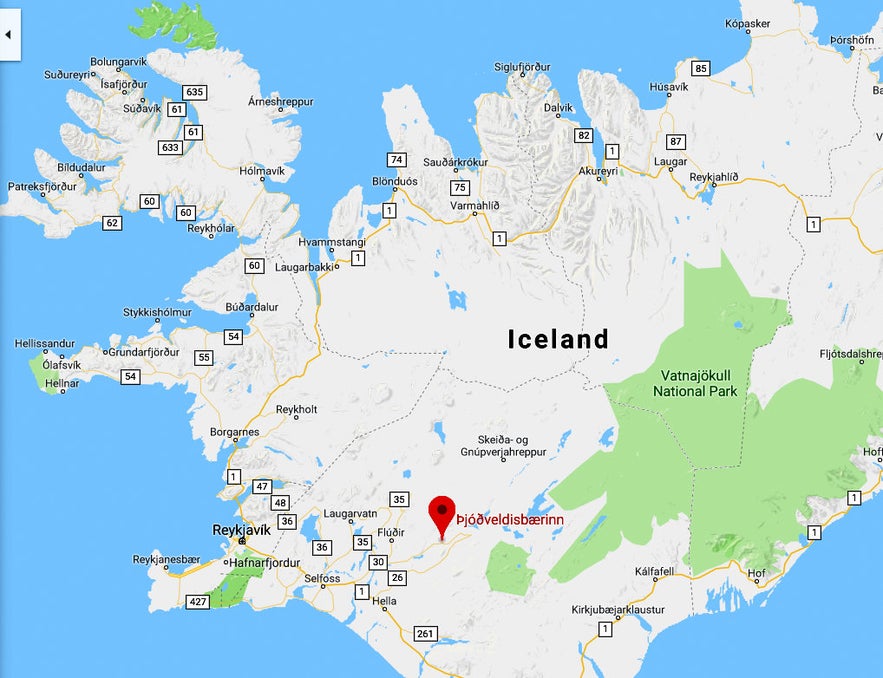 The road to Stöng is a bumpy gravel road, at times in a bad condition so a 4x4 is needed here. But a 2WD suffices for the reconstructed Saga-Age farm as the road is paved all the way.
The road to Stöng is a bumpy gravel road, at times in a bad condition so a 4x4 is needed here. But a 2WD suffices for the reconstructed Saga-Age farm as the road is paved all the way.
See also my other travel-blogs about places of interest in this part of Iceland:
Háifoss Fall and the beautiful Waterfalls in Fossá River in Iceland
Gjáin in Þjórsárdalur Valley Upcountry Iceland - One of Iceland's Pearls of Nature
Landmannalaugar the Pearl of the Central Highland of Iceland
Have a lovely time in Þjórsárdalur valley :)
Ref:
其他有意思的博客
冰岛最浪漫的角落
对于很多人,遥远的冰岛有着世界尽头的神秘,有着区别于巴黎、马尔代夫、自成一体的浪漫。没有埃菲尔铁塔和蒂凡尼,没有热带沙滩,而是在冰川、火山、苔藓地的背景下蜜月旅拍、婚拍,甚至举办一场冰岛婚礼。来冰岛旅行,多是要跨千山万水、飞跃大洋大陆,很有一点“万水千山陪你走过”的史诗感。难怪很多人说,光是冰岛二字,就足够浪漫了。 冰岛虽然不大,但是地貌极其丰富,不同的自然景观自然有不同的气质。这一篇,就挑阅读更多从极光观测到摄影-到底该不该来冰岛看极光
很多朋友都想来冰岛看极光,但是冰岛到底适不适合看极光呢?几月、什么季节能看到极光?是不是一定要参加北极光旅行团?如何能拍摄出美丽的极光照片呢?在冰岛住了好几年了,从刚开始逢极光必出门,到如今家里阳台就能看极光,我对在冰岛看极光的了解和经验,也算得上大半个专家了,且听我娓娓道来吧。 到底该不该来冰岛看极光呢?最坦诚的答案是,不要只为了看极光而看极光。 极光原理 太阳活动→太阅读更多
迷失冰岛的米湖游览推荐|不只有温泉的地热宝藏区
我在冬夏秋均到访过米湖,看过米湖的不同面。一直以来,米湖到底值不值得去是很多游客争论的问题。有些人觉得这里是来冰岛旅行的必去目的地,有些人则说米湖“太丑了”,连照片都不想多拍几张。那米湖到底值不值得来呢?到底怎么玩呢? 米湖的风景 北部的米湖,因地理位置相距首都雷克雅未克略远,很多来冰岛的短途游客选择放弃,其实米湖应该是和黄金圈、南岸沿线至冰湖齐名的冰岛景色,这里冷热相融,可谓最冰岛,尤其阅读更多

将冰岛最大的旅行平台下载到您的手机中,一站式管理您的整个行程
使用手机摄像头扫描此二维码,然后点击显示的链接,将冰岛最大的旅行平台添加到您的手机中。输入您的电话号码或电子邮件地址,以接收包含下载链接的短信或电子邮件。

